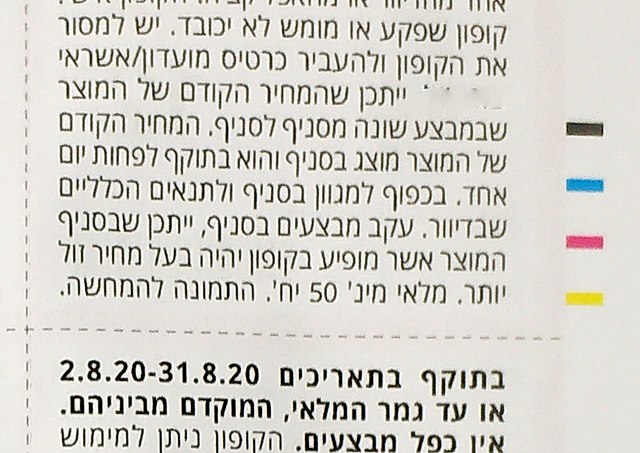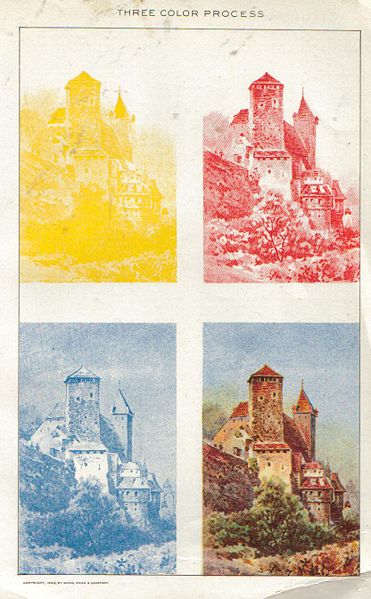Halftone is the reprographic technique that simulates continuous-tone imagery through the use of dots, varying either in size or in spacing, thus generating a gradient-like effect. "Halftone" can also be used to refer specifically to the image that is produced by this process.
The first printed photo using a halftone in a Canadian periodical, October 30, 1869
A multicolor postcard (1899) printed from hand-made halftone plates
This close-up of a halftone print shows that magenta on top of yellow appears as orange/red, and cyan on top of yellow appears as green.
Purple screens used in offset printing: Angles 90°, 105°, 165°
The CMYK color model is a subtractive color model, based on the CMY color model, used in color printing, and is also used to describe the printing process itself. The abbreviation CMYK refers to the four ink plates used: cyan, magenta, yellow, and key (black).
What appears as cerulean ( ) in the top image is actually a blend of cyan, magenta, yellow and black, as magnification under a microscope demonstrates.
A color photograph of the Teton Range.
Inspection CMYK colors of offset printing on a paper
Early representation of the three-color process (1902)








